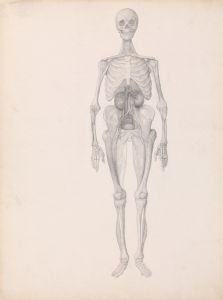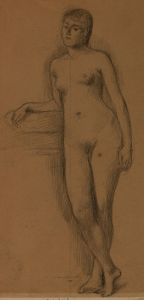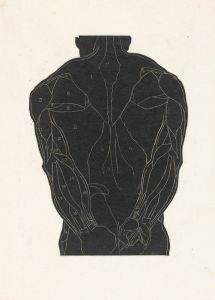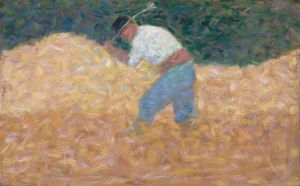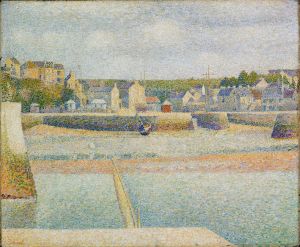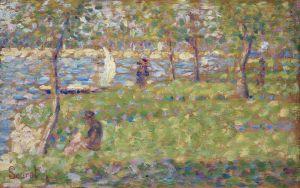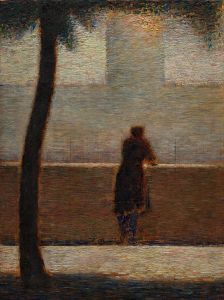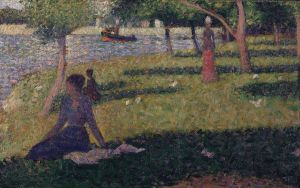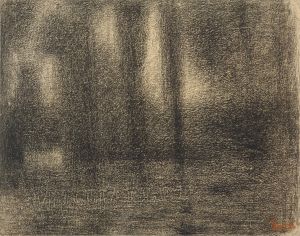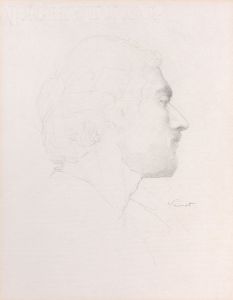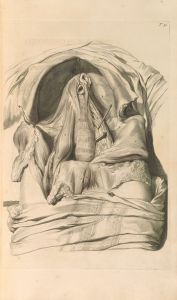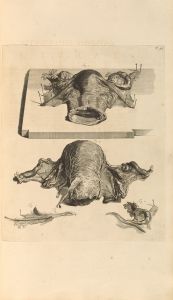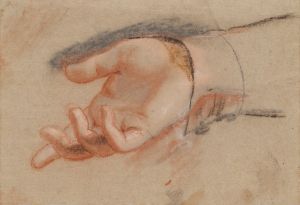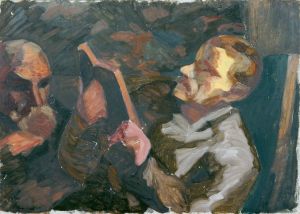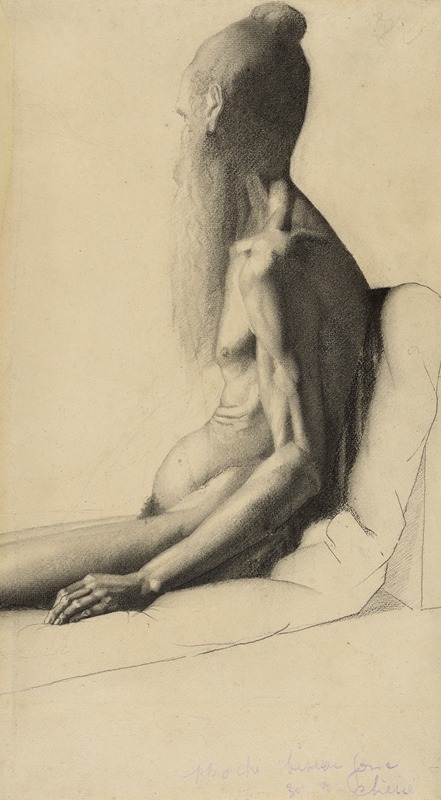
Nude Study of an Old Man
A hand-painted replica of Georges Seurat’s masterpiece Nude Study of an Old Man, meticulously crafted by professional artists to capture the true essence of the original. Each piece is created with museum-quality canvas and rare mineral pigments, carefully painted by experienced artists with delicate brushstrokes and rich, layered colors to perfectly recreate the texture of the original artwork. Unlike machine-printed reproductions, this hand-painted version brings the painting to life, infused with the artist’s emotions and skill in every stroke. Whether for personal collection or home decoration, it instantly elevates the artistic atmosphere of any space.
Georges Seurat, a pioneering French post-impressionist artist, is renowned for his innovative use of color and technique, particularly through the development of pointillism. Among his numerous works, "Nude Study of an Old Man" stands out as a significant piece that reflects his meticulous approach to form and light. This artwork, created in the late 19th century, is a testament to Seurat's dedication to exploring the human figure and his interest in classical themes.
"Nude Study of an Old Man" is a charcoal drawing that exemplifies Seurat's skill in capturing the human form with precision and sensitivity. The drawing depicts an elderly male figure, seated and unclothed, rendered with a remarkable attention to detail. Seurat's use of charcoal allows for a range of tones and textures, creating a sense of depth and volume in the figure. The careful modulation of light and shadow in the drawing highlights the contours of the man's body, emphasizing the anatomical structure and the play of light across his skin.
Seurat's approach to this study is indicative of his broader artistic philosophy, which was heavily influenced by scientific theories of color and perception. Although "Nude Study of an Old Man" is a monochromatic work, it reflects Seurat's interest in the effects of light and shadow, akin to his exploration of color in his paintings. This drawing is part of Seurat's extensive body of preparatory studies, which he often used to refine his understanding of form and composition before executing larger works.
The context of the late 19th century in which Seurat worked was marked by a shift in artistic practices, with many artists seeking new ways to represent reality. Seurat was at the forefront of this movement, challenging traditional methods and embracing a more scientific approach to art. His studies, including "Nude Study of an Old Man," were instrumental in developing his technique of pointillism, where small, distinct dots of color are applied in patterns to form an image.
Seurat's dedication to his craft and his innovative techniques have left a lasting impact on the art world. His works, including "Nude Study of an Old Man," continue to be studied for their technical brilliance and their contribution to the evolution of modern art. This particular drawing is a reflection of Seurat's ability to convey the subtleties of the human form and his commitment to exploring new artistic frontiers.
Today, "Nude Study of an Old Man" is appreciated not only for its technical excellence but also for its place within Seurat's oeuvre. It offers insight into the artist's process and his relentless pursuit of capturing the essence of his subjects. As with many of Seurat's works, this drawing is a valuable piece for understanding the transition from traditional to modern art practices, highlighting the artist's role in shaping the future of visual expression.





